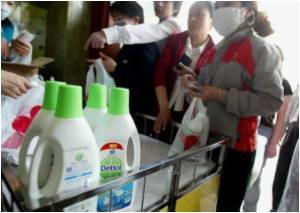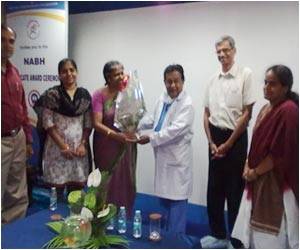A combination of robot-like devices that disperse a bleaching agent into the air and then detoxify the disinfecting chemical can effectively kill and prevent the spread of superbugs.

Results showed that the enhanced cleaning reduced by 64 percent the number of patients who later became contaminated with any of the most common drug-resistant organisms. Moreover, researchers found that protection from infection was conferred on patients regardless of whether the previous room occupant was infected with drug-resistant bacteria or not.
"Hydrogen peroxide vapor, as spread around patients' rooms by these devices, represents a major technological advance in preventing the spread of dangerous bacteria inside hospitals and, especially, from one patient occupant to the next, even though sick patients were never in the same room at the same time," said infectious disease specialist and study senior investigator Trish Perl, M.D., M.Sc.
Of special note, researchers said, was that enhanced cleaning with the vapor reduced by 80 percent a patient's chances of becoming colonized by a particularly aggressive and hard-to-treat bacterium, vancomycin-resistant enterococci (VRE).
In what is believed to be the first head-to-head comparison between traditional hand-cleaning and mopping with bleaching agents and robotic vaporizers, researchers routinely tested patients and their surroundings not only for VRE, but also for the more common methicillin-resistant Staphylococcus aureus, or MRSA, and lesser-known bacteria, including Clostridium difficile and Acinetobacter baumannii.
Some 6,350 patient admissions to JHH were closely tracked as part of the two-and-a-half-year analysis, as patients moved into and out of 180 private hospital rooms. Almost half the rooms received enhanced cleaning with hydrogen peroxide vapor in between patients, while the rest did not. Overall, multiple-drug-resistant organisms were found on room surfaces in 21 percent of rooms tested, but mostly in rooms that did not undergo enhanced cleaning.
Advertisement
"Our study results are evidence that technological solutions, when combined with standard cleaning, can effectively and systematically decontaminate patients' rooms and augment other behavioral practices, such as strict hospital staff compliance with hand-washing and bathing patients in disinfecting chlorhexidine when they are first admitted to the hospital," said Perl, senior hospital epidemiologist for the Johns Hopkins Health System and a professor at the Johns Hopkins University School of Medicine.
Advertisement
The study will be published in the journal Clinical Infectious Diseases.
Source-ANI









